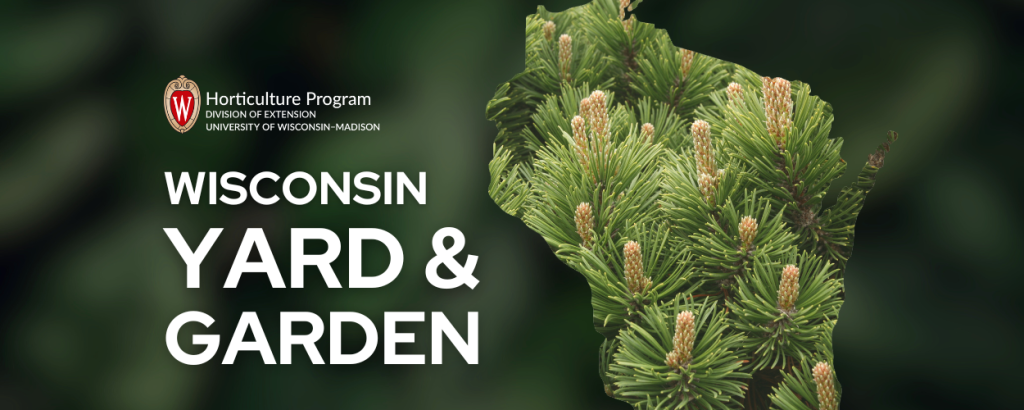
This article was originally published for the Northwoods Yard and Garden column by Extension Iron County.
Evergreen conifers become very prominent throughout the landscape over the winter months in Wisconsin. In addition, Thanksgiving weekends traditionally kick off the annual search for the perfect Christmas tree. Here is an overview of the more common pine species.
Pines, as a group, share the characteristic of having long needles arranged in clusters or bundles; usually of 2, 3 or 5. Needles of each bundle fuse together at the base where connected to the twig. If pruned (sheared) regularly, usually in early June as new growth expands, pines stay very compact and dense in appearance as found in Christmas tree lots. If never pruned, pines tend to open in growth habit as they mature. White pines are desirable landscape trees and double as a nice Christmas tree.
White pine has long, soft needles in bundles of five, exceptionally long (4-8 inches) often curved cones, and a graceful appearance. Large white pines are found in historical logging and resort areas across much of northern Wisconsin. Needle drop in early fall is usually heavy, which can be an inconvenience when needles pile up on roofs of houses, garages, or cabins located under a large white pine.
White pine is sensitive to deicing salt, air pollution, and problems associated with heavy clay soils, so selecting the suitable spot in the landscape is important.
The most popular pine for Christmas trees is Scotch, or Scots, pine, which has needles found in bundles of two. As trees mature, they develop attractive orange bark on the upper limbs and trunk areas. Although an excellent Christmas tree, for landscape use Scots pine is not necessarily the best choice. It is prone to drought damage and often develops insect and disease problems which tend to limit longterm use.
Austrian pine is a widely used landscape tree but not commonly used as a Christmas tree. Long, stiff needles are in bundles of two and come to a very sharp point. Austrian pines are good urban trees, meaning they will tolerate less than ideal soil conditions, air pollution, and salts. They are frequently planted in parks, windbreaks, and along highways for that reason.
Red pine, also known as Norway pine, is similar in appearance to Austrian, although may be used less in landscapes, more as Christmas trees, and frequently in Wisconsin forest plantings. A trick to tell them apart is to bend the needles. If the needle snaps, it is a red pine. If it bends but does not break, it is an Austrian.

About the Author
Bruce Spangenberg is a Horticulture Outreach Specialist with UW-Madison Division of Extension. Get answers to your lawn, landscape and garden questions anytime at “Ask Your Gardening Question.”




